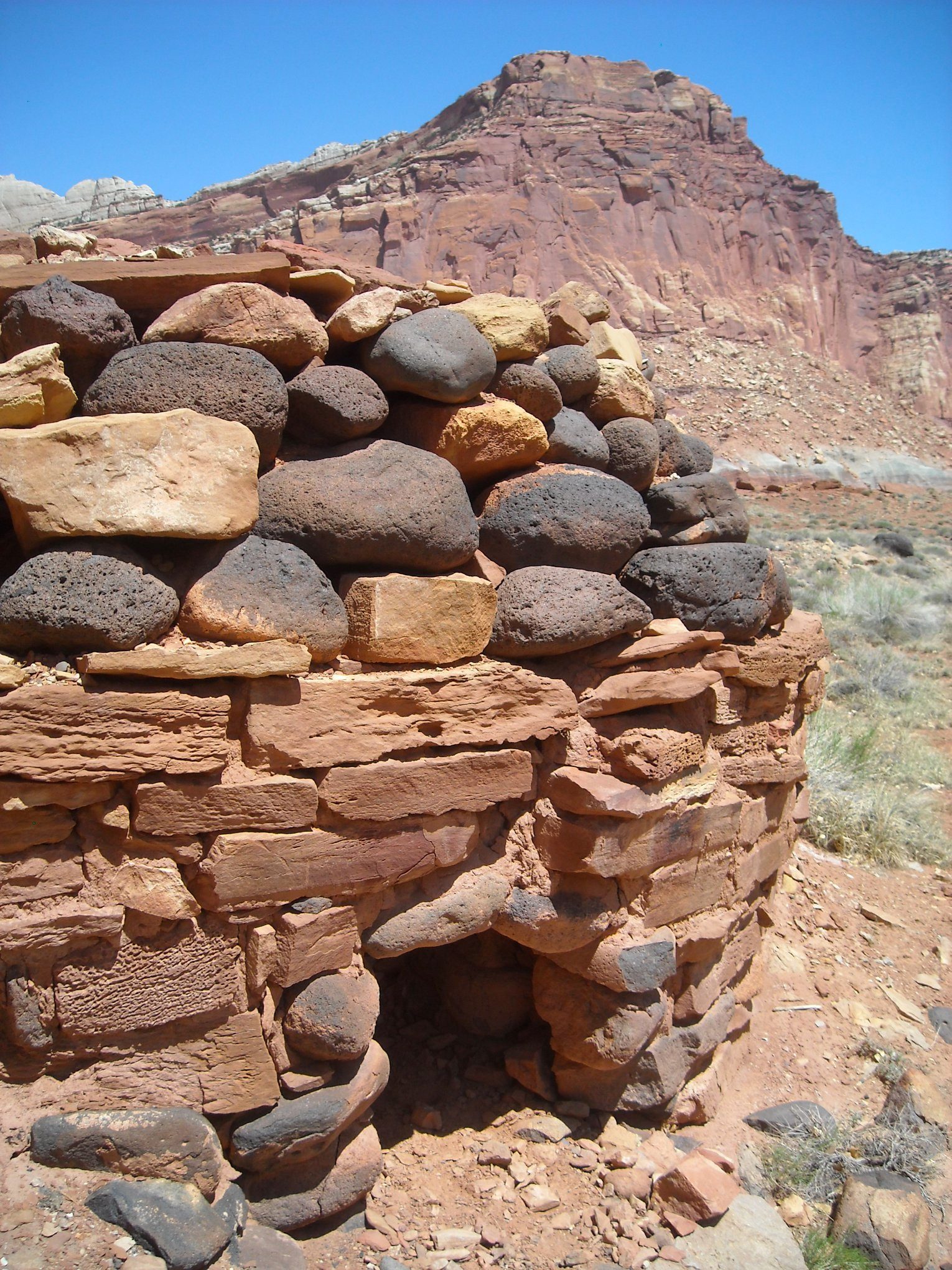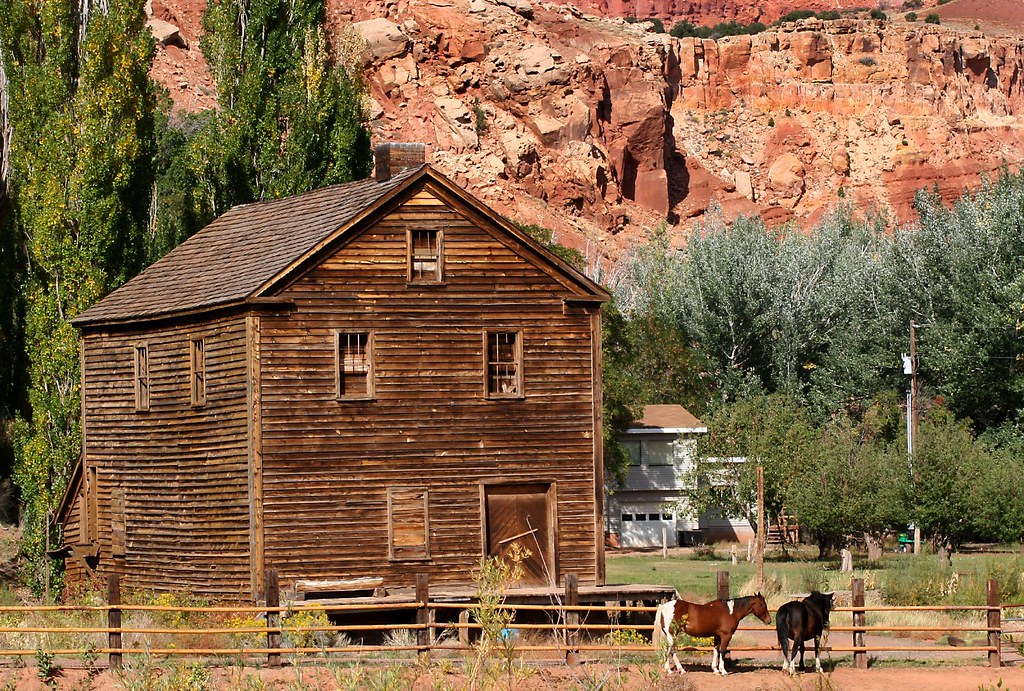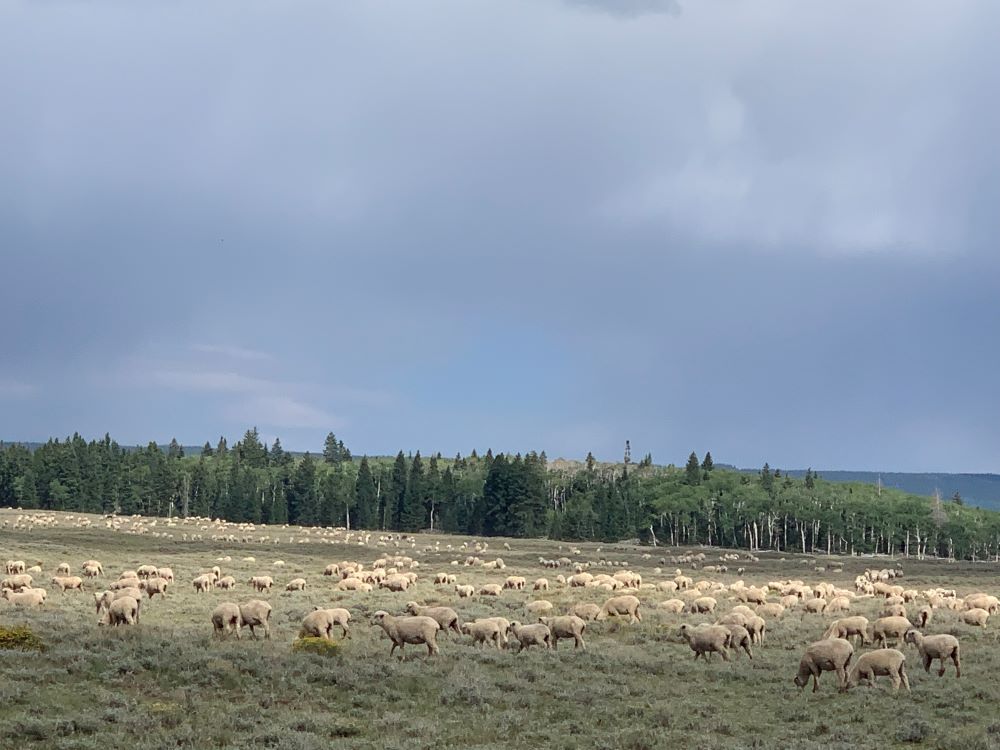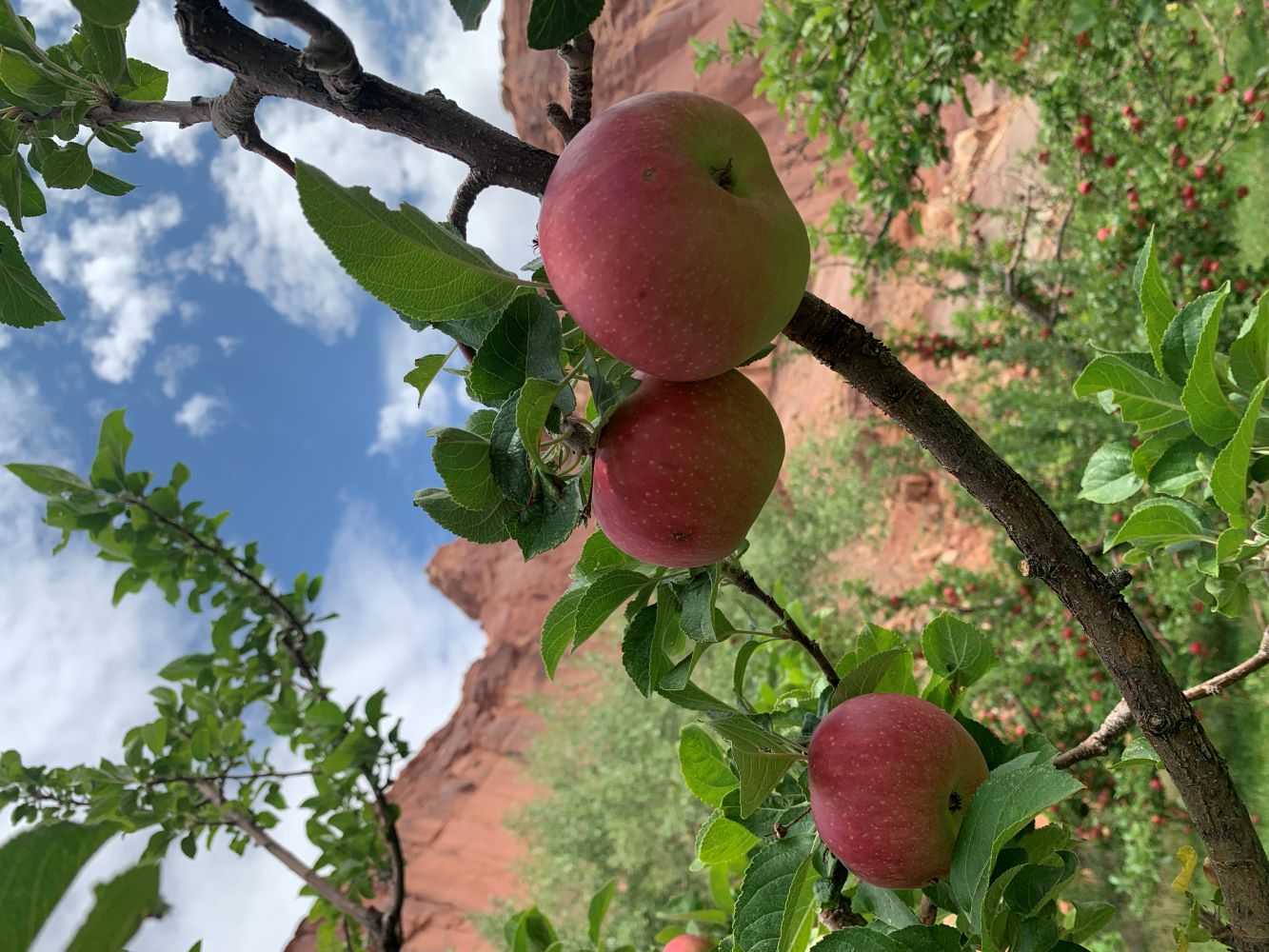Capitol Reef is known for its historic orchards with heirloom varieties of fruit. For the early pioneers, fruit was one of the few
easy ways to satisfy your sweet tooth. While sugar/sweetness can come from a variety
of sources (sugar cane, sugar beets, fruit, honey, etc.) many of those options were
fairly expensive and hard to get into the early 1900s, especially in a rural place
like Wayne County. The community of Fruita was an ideal place to plants orchards (even
compared to Torrey and Loa) because of the longer growing season, lower elevation,
access to easy irrigation water from the Fremont River, and the microclimate created
by the red cliffs.
Fruit was a valuable commodity, and residents of Fruita often bartered and traded
with their apples, pears, peaches, plums, apricots, and cherries for necessities like
hay, grain, cheese, potatoes, and pigs. The small farms were planted with a variety
of fruit that ripened throughout the early summer and into fall. This was a key way
to provide income throughout harvest season. Cherries and apricots ripened first,
while apples and pears ripened late in the summer and early fall.
At first, locals would sell their fruit within the county, or trade it for other goods.
Later, trucks took fruit to Salt Lake City, Ely (NV), and Nebraska. Once refrigeration
was more widely available (after World War I), fruit could be shipped longer distances.
For the farmers in Fruita, though, most of the heirloom varieties didn't ship well, since they bruised easily and ripened too quickly. Commercial fruit
operations took over, and people began planting different varieties that shipped well,
held their color, and didn't ripen too quickly; taste became less important. The Fruita
orchards became less profitable with the advent of large-scale commercial orchards
and refrigerated trucks.
Another aspect of the fruit economy was hiring people to harvest it. Historically
families from Wayne County were the primary pickers, with people of all ages pitching
in to help. Sometimes families came from as far away as Koosharem, which was a four-day
trip by buckboard. Families would pick fruit, and then can or bottle it on-site. Dried
fruit could be sold and shipped farther.
At first, the Fruita orchards were owned and managed privately, but once the park
bought the land, management changed. For years, the park allowed local residents to
manage the orchards, set prices, and sell fruit. Then the park leased the orchards,
and more recently, the park took over management of the orchards with a horticulturalist
and orchard manager. Now visitors are allowed to pick fruit when it is in season (check
the website or ask at the visitor center if anything is ripe for harvest).






